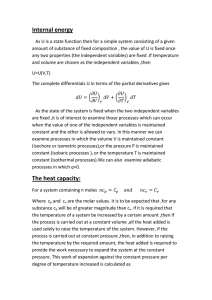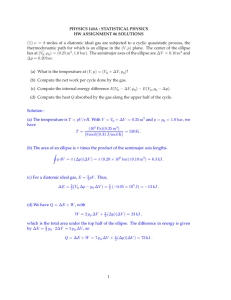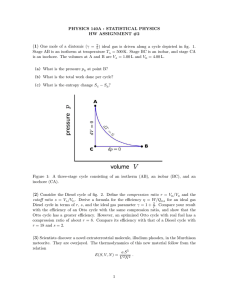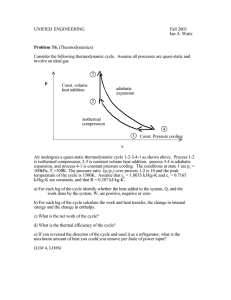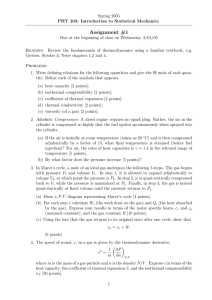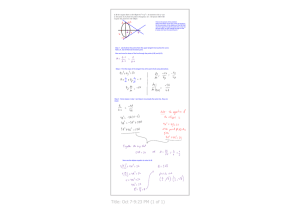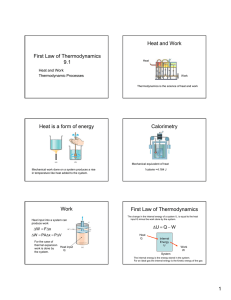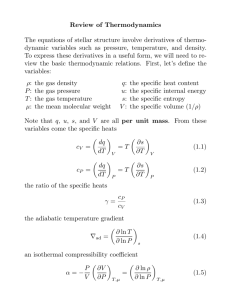(1)
advertisement
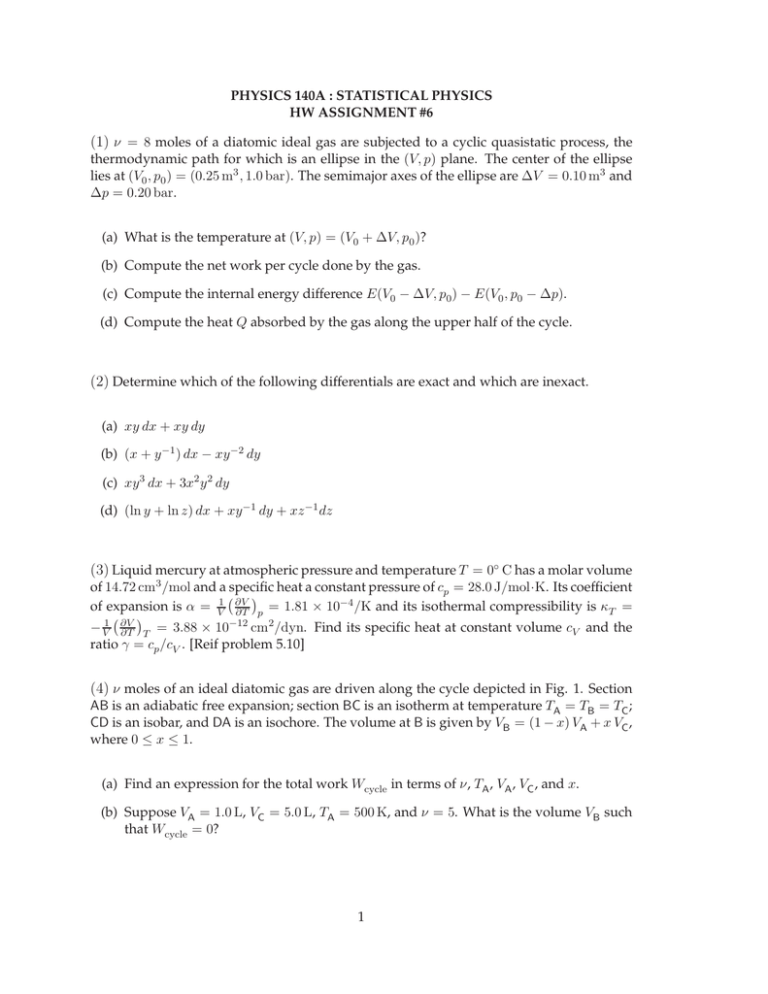
PHYSICS 140A : STATISTICAL PHYSICS HW ASSIGNMENT #6 (1) ν = 8 moles of a diatomic ideal gas are subjected to a cyclic quasistatic process, the thermodynamic path for which is an ellipse in the (V, p) plane. The center of the ellipse lies at (V0 , p0 ) = (0.25 m3 , 1.0 bar). The semimajor axes of the ellipse are ∆V = 0.10 m3 and ∆p = 0.20 bar. (a) What is the temperature at (V, p) = (V0 + ∆V, p0 )? (b) Compute the net work per cycle done by the gas. (c) Compute the internal energy difference E(V0 − ∆V, p0 ) − E(V0 , p0 − ∆p). (d) Compute the heat Q absorbed by the gas along the upper half of the cycle. (2) Determine which of the following differentials are exact and which are inexact. (a) xy dx + xy dy (b) (x + y −1 ) dx − xy −2 dy (c) xy 3 dx + 3x2 y 2 dy (d) (ln y + ln z) dx + xy −1 dy + xz −1 dz (3) Liquid mercury at atmospheric pressure and temperature T = 0◦ C has a molar volume of 14.72 cm3 /mol and a specific heat a constant pressure of cp = 28.0 J/mol·K. Its coefficient −4 of expansion is α = V1 ∂V ∂T p = 1.81 × 10 /K and its isothermal compressibility is κT = −12 cm2 /dyn. Find its specific heat at constant volume c and the − V1 ∂V V ∂T T = 3.88 × 10 ratio γ = cp /cV . [Reif problem 5.10] (4) ν moles of an ideal diatomic gas are driven along the cycle depicted in Fig. 1. Section AB is an adiabatic free expansion; section BC is an isotherm at temperature TA = TB = TC ; CD is an isobar, and DA is an isochore. The volume at B is given by VB = (1 − x) VA + x VC , where 0 ≤ x ≤ 1. (a) Find an expression for the total work Wcycle in terms of ν, TA , VA , VC , and x. (b) Suppose VA = 1.0 L, VC = 5.0 L, TA = 500 K, and ν = 5. What is the volume VB such that Wcycle = 0? 1 Figure 1: Thermodynamic cycle for problem 4, consisting of adiabatic free expansion (AB), isotherm (BC), isobar (CD), and isochore (DA). (5) A strange material found stuck to the bottom of a seat in Warren Lecture Hall 2001 obeys the thermodynamic relation E(S, V, N ) = a S 6 /V 2 N 3 , where a is a dimensionful constant. (a) What are the MKS dimensions of a? (b) Find the equation of state relating p, V , N , and T . ∂V ∂T p . (c) Find the coefficient of thermal expansion α = of intensive quantities p, T , and n = N/V . 1 V (d) Find the isothermal compressibility κ = − V1 intensive quantities p, T , and n = N/V . ∂V ∂p T . 2 Express your answer in terms Express your answer in terms of
